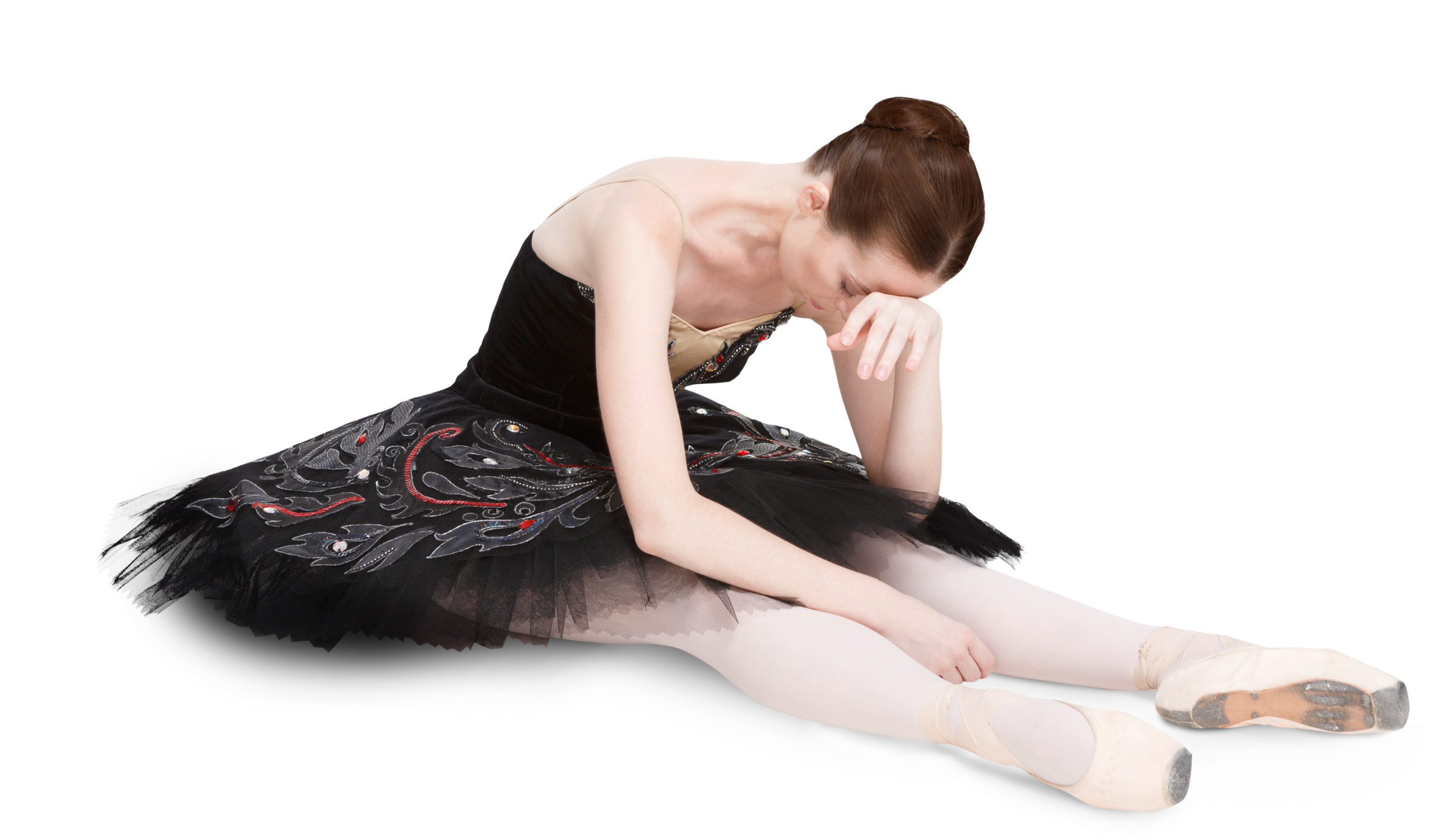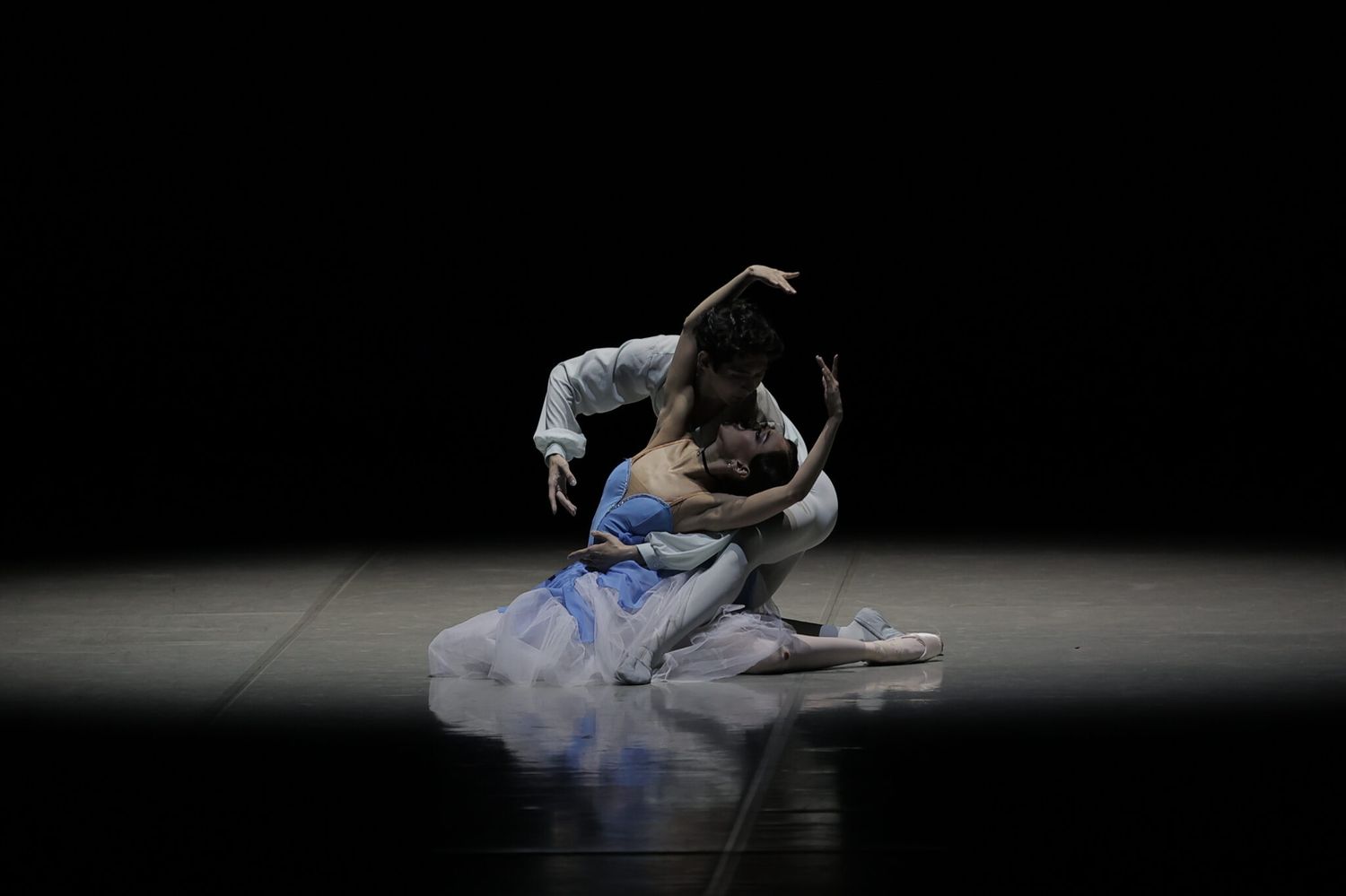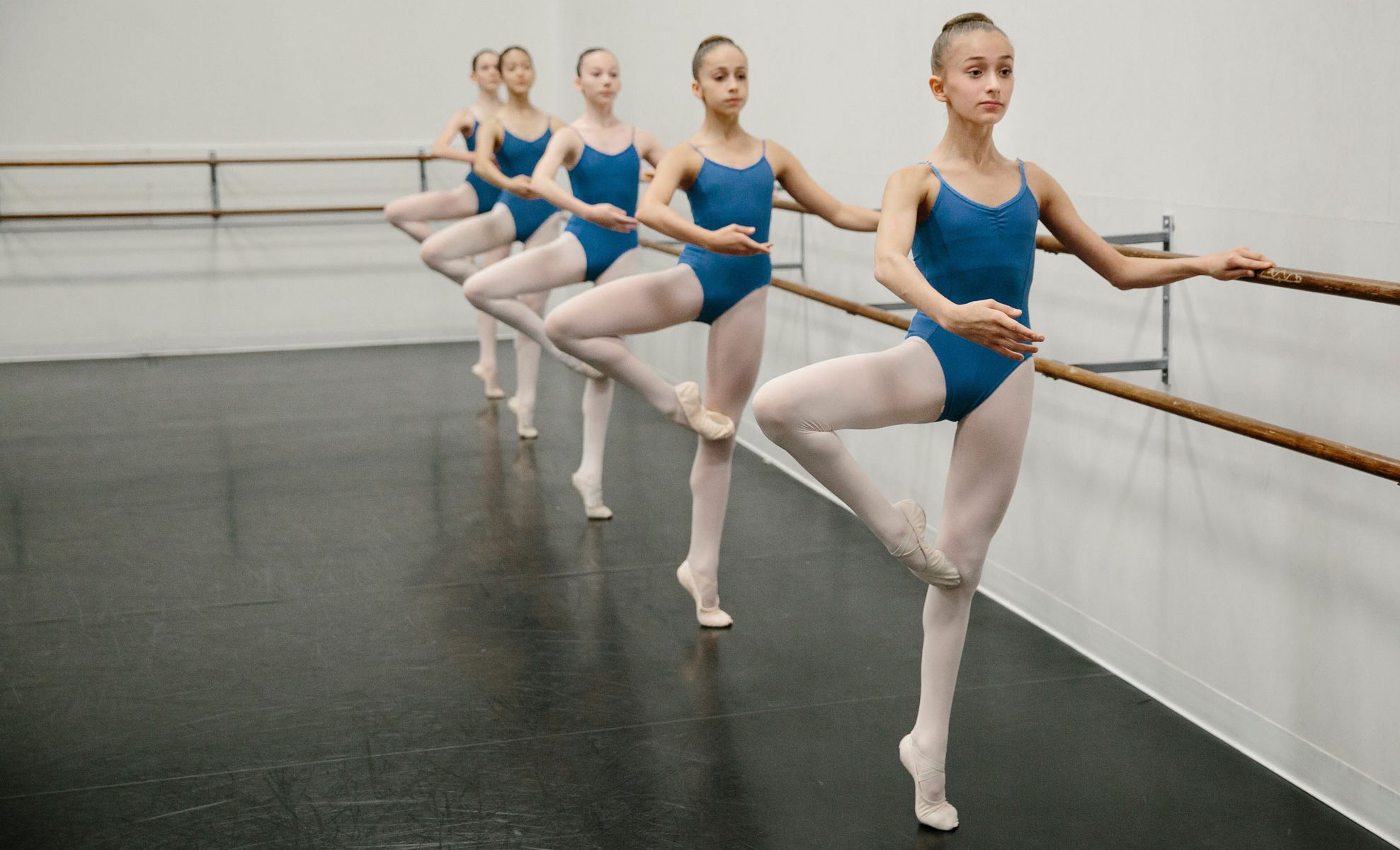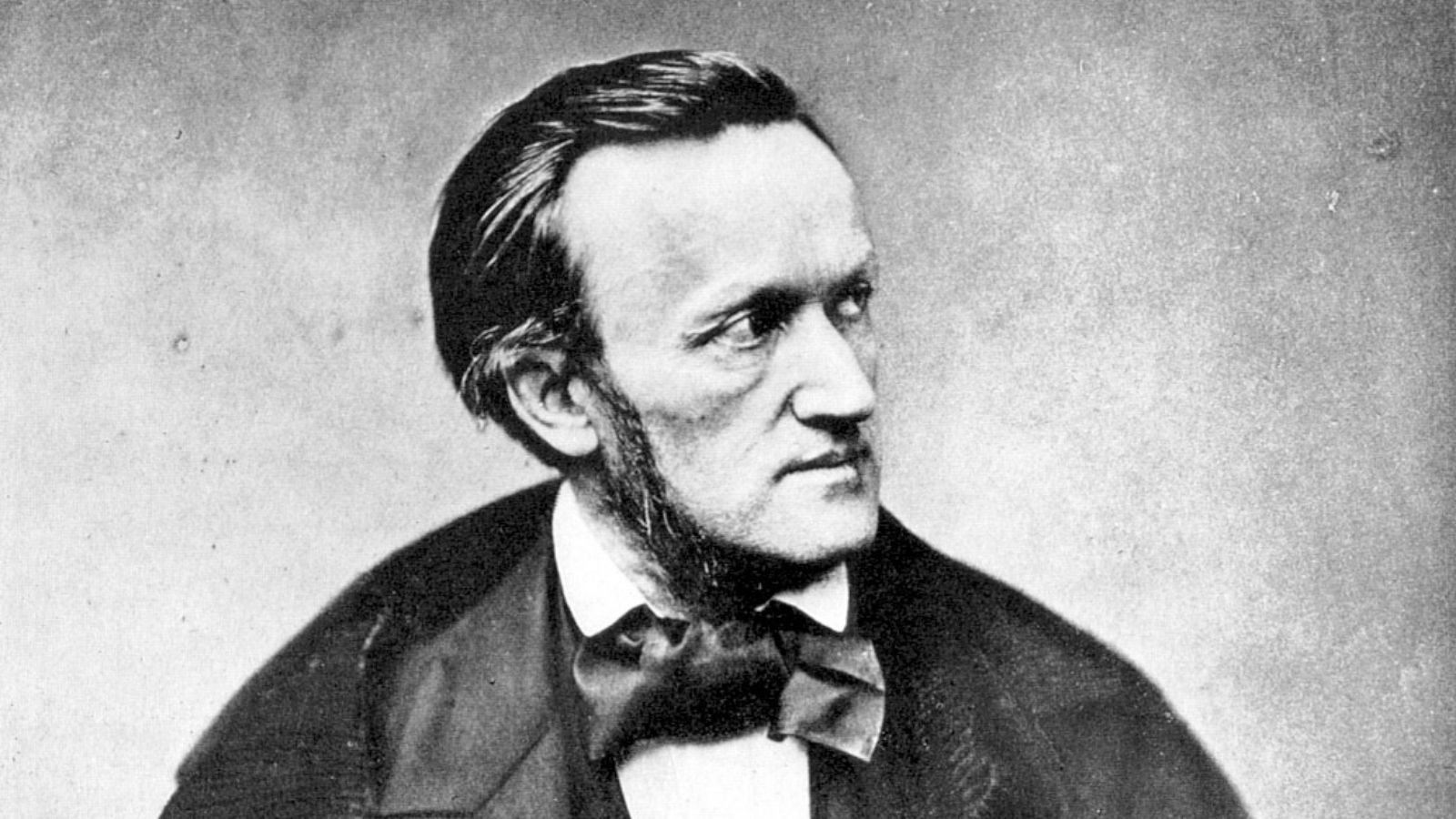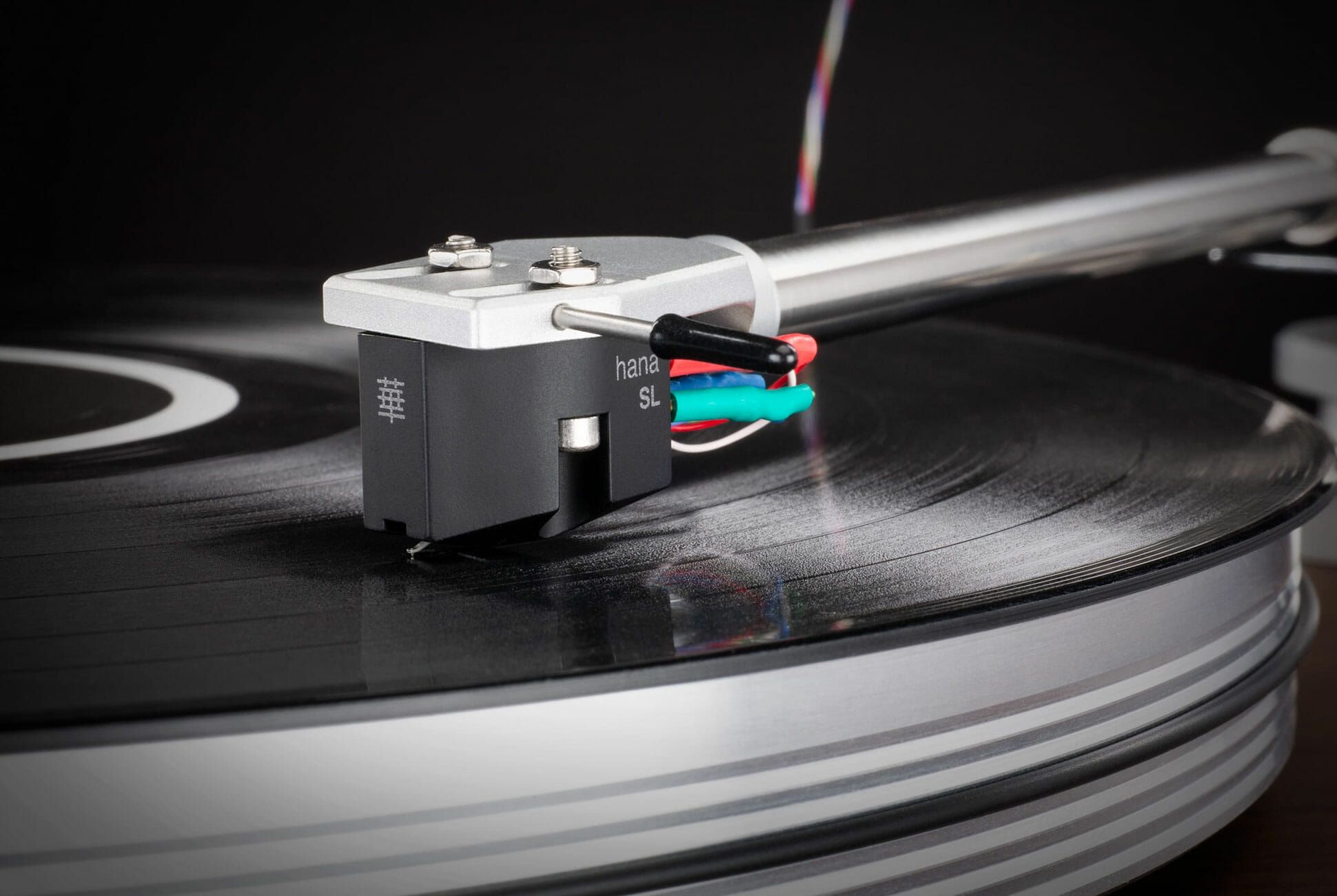Home>Events & Info>Ballet>Why Is Ballet So Popular In Russia


Ballet
Why Is Ballet So Popular In Russia
Published: January 9, 2024
Discover the allure of ballet in Russia, where this elegant art form has captivated audiences for generations. Explore the rich history and cultural significance of ballet in the Russian tradition.
(Many of the links in this article redirect to a specific reviewed product. Your purchase of these products through affiliate links helps to generate commission for AudioLover.com, at no extra cost. Learn more)
Table of Contents
- Introduction
- Historical Context: The Russian Influence on Ballet
- Ballet Training and Education in Russia
- The Russian Ballet Repertoire
- Renowned Russian Ballet Companies
- Famous Russian Ballet Dancers
- Cultural Significance of Ballet in Russia
- Ballet’s Impact on Russian Society
- Government Support for Ballet in Russia
- Future of Ballet in Russia
- Conclusion
Introduction
Ballet, the classical dance form characterized by grace, precision, and artistic expression, has captivated audiences around the world for centuries. It is a dance style that requires years of training and discipline, pushing dancers to their physical and emotional limits. While ballet may have originated in Renaissance Italy and gained popularity in France during the 17th and 18th centuries, it is undoubtedly the Russian influence that has cemented its place as one of the most revered art forms in the country.
Russia’s love affair with ballet can be traced back to the 18th century, when it was introduced to the Russian Imperial Court by French and Italian masters. However, it was under the reign of Catherine the Great in the late 18th century that ballet truly flourished in Russia. The empress’s passion for the art form led to the establishment of the first professional ballet company in St. Petersburg, laying the foundation for what would become the world-renowned Russian ballet tradition.
Russian ballet is characterized by its technical excellence, expressive storytelling, and grand scale productions. It embraces the classical ballet repertoire while also pushing the boundaries with innovative choreography and daring performances. The Russian ballet tradition has produced some of the most iconic ballets, such as “Swan Lake,” “The Nutcracker,” and “Don Quixote,” which continue to be performed and cherished by audiences worldwide.
Not only has Russia given birth to timeless ballet masterpieces, but it has also nurtured generations of exceptional ballet dancers. Russian ballet training is renowned for its rigorous discipline and emphasis on technical precision. The Vaganova method, developed by Agrippina Vaganova at the Imperial Ballet School in St. Petersburg, is widely regarded as one of the most influential ballet training techniques in the world.
In this article, we will explore the historical context of ballet in Russia, delve into the training and education system, highlight the repertoire of Russian ballet, celebrate the renowned Russian ballet companies and dancers, delve into the cultural significance of ballet in the country, discuss the government support for the art form, and ponder the future of ballet in Russia. Join us on this captivating journey into the world of Russian ballet!
Historical Context: The Russian Influence on Ballet
In order to understand the significance of ballet in Russia, it is important to delve into its historical context and the profound impact the art form has had on the country’s cultural landscape. The Russian influence on ballet can be traced back to the 18th century, when Empress Catherine the Great fostered a deep love and appreciation for the art form.
During this time, Catherine the Great invited renowned ballet masters from France and Italy to the Russian Imperial Court to train and perform for the royal family and courtiers. These European influences heavily shaped and influenced the early development of ballet in Russia. However, it was under the reign of Catherine’s successors, particularly with the ascension of Tsar Nicholas I, that ballet truly flourished and took on a distinctly Russian character.
One of the key figures in the evolution of Russian ballet was Marius Petipa, a French ballet master who was invited to work at the Imperial Ballet School in St. Petersburg in the mid-19th century. Petipa’s collaboration with Russian composers, most notably Pyotr Ilyich Tchaikovsky, resulted in the creation of some of the most significant ballets in history, including “Swan Lake,” “The Sleeping Beauty,” and “The Nutcracker.”
Under Petipa’s choreographic genius, these ballets showcased intricate footwork, dazzling technical feats, and a level of storytelling that elevated ballet to new heights. The Russian ballet tradition, with its emphasis on precise technique, expressive movement, and captivating narratives, became renowned worldwide.
The Russian ballet tradition also saw the emergence of the famed Ballets Russes company in the early 20th century, led by the visionary Sergei Diaghilev. The Ballets Russes revolutionized ballet by collaborating with ground-breaking composers, artists, and choreographers, such as Igor Stravinsky, Pablo Picasso, and Vaslav Nijinsky. Their avant-garde productions pushed the boundaries of traditional ballet and transformed the art form into a multi-faceted and progressive art.
Russian ballet has continued to evolve and thrive over the years, with influential choreographers and dancers leaving their mark on the art form. From the poetic artistry of Rudolf Nureyev and Mikhail Baryshnikov to the technical prowess of Polina Semionova and Diana Vishneva, Russian dancers have consistently risen to the forefront of the ballet world.
The Russian influence on ballet extends beyond the stage. The country has numerous ballet academies and schools that attract aspiring dancers from around the world. The rigorous training and high standards set by these institutions have produced many of the greatest ballet dancers of our time.
Today, the Russian influence on ballet can be felt in every corner of the world. Russian ballet companies continue to tour internationally, mesmerizing audiences with their impeccable technique, emotional depth, and exquisite artistry. The Russian ballet tradition has undeniably left an indelible mark on the art form, solidifying its place as one of the most esteemed and revered expressions of artistic beauty.
Ballet Training and Education in Russia
Russia has long been renowned for its rigorous and comprehensive ballet training programs. The country’s ballet education system is known for producing exceptional dancers who possess the technical prowess, artistry, and discipline required to excel in the demanding world of professional ballet.
At the heart of ballet training in Russia is the Vaganova method, developed by Agrippina Vaganova at the Imperial Ballet School, now known as the Vaganova Academy, in St. Petersburg. The Vaganova method combines elements of the French and Italian ballet techniques and focuses on achieving a balance between strength, flexibility, and expressiveness.
The education journey for aspiring ballet dancers in Russia generally begins at a young age, often between the ages of 6 and 8. Many students enter specialized ballet schools, such as the Vaganova Academy in St. Petersburg or the Bolshoi Ballet Academy in Moscow, where they receive comprehensive training in ballet techniques, artistry, music, and dance theory.
The curriculum at these ballet schools is intense and demanding, with a major focus on classical ballet training. Students undergo rigorous daily classes that include ballet technique, pointe work, pas de deux, variations, character dance, and supplementary classes such as music and anatomy.
The training regimen emphasizes discipline, precision, and consistency. Students are expected to master intricate technical steps, develop strong turnout and flexibility, and cultivate a deep understanding of musicality and expression. Long hours of practice and repetition are required to achieve the level of technical proficiency expected of Russian ballet dancers.
Another distinctive aspect of ballet training in Russia is the emphasis on performance opportunities. Students at the top ballet schools have the privilege of performing in full-scale productions, often collaborating with professional ballet companies. This early exposure to performing on stage helps students develop stage presence, stamina, and the ability to convey emotion through their movements.
In addition to the formal ballet education at specialized schools, ballet training in Russia often includes participation in youth ballet competitions and festivals. These events provide young dancers with valuable performance experience and the opportunity to showcase their talents on a larger scale.
While the training is rigorous, Russian ballet education also places great importance on nurturing individual artistry and creativity. Students are encouraged to develop their own artistic interpretation of choreography, bringing their unique voice to the classical repertoire.
The training and education system in Russia has produced some of the most celebrated ballet dancers in history. The combination of technical excellence, artistic sensitivity, and passion for the art form sets Russian-trained dancers apart on the world stage.
Despite the demanding nature of ballet training in Russia, the country’s ballet schools have become sought-after institutions for aspiring dancers from around the world. The opportunity to learn from renowned teachers and train alongside talented peers attracts students who are dedicated to the pursuit of excellence in ballet.
Overall, ballet training and education in Russia embody a rich tradition of excellence and provide a solid foundation for aspiring dancers to develop their skills, hone their artistry, and embark on successful careers in the world of ballet.
The Russian Ballet Repertoire
The Russian ballet repertoire is a treasure trove of iconic works that have made a lasting impact on the world of dance. From timeless classics to innovative contemporary pieces, the repertoire showcases the depth and diversity of Russian ballet.
One of the crown jewels of the Russian ballet repertoire is undoubtedly “Swan Lake.” Composed by Pyotr Ilyich Tchaikovsky and with choreography by Marius Petipa and Lev Ivanov, this ballet tells the hauntingly beautiful story of Odette, a princess cursed to live as a swan, and Prince Siegfried, who falls in love with her. The lyrical choreography and Tchaikovsky’s enchanting score have captivated audiences for over a century.
Another beloved ballet in the Russian repertoire is “The Nutcracker.” This holiday classic, also composed by Tchaikovsky and choreographed by Petipa and Ivanov, follows a young girl named Clara as she embarks on a magical journey with her Nutcracker prince. “The Nutcracker” is renowned for its enchanting characters, delightful music, and dazzling dances, such as the iconic Dance of the Sugar Plum Fairy.
When it comes to storytelling ballets, few can compare to “The Sleeping Beauty.” With music by Tchaikovsky and choreography by Petipa, this ballet brings to life the fairy tale of Princess Aurora, cursed by the evil Carabosse and awakened by the kiss of true love. “The Sleeping Beauty” showcases the grandeur and elegance of Russian ballet, with intricate group formations, exquisite costumes, and stunning solos.
In addition to these classic ballets, the Russian repertoire also includes masterpieces like “Giselle,” “Don Quixote,” “Romeo and Juliet,” and “La Bayadère.” Each of these ballets showcases the virtuosity, technical skill, and emotional range of Russian dancers.
Furthermore, Russian ballet has been at the forefront of innovative and groundbreaking creations. Throughout the 20th century, ballet companies such as the Ballets Russes and the Bolshoi Ballet pushed the boundaries of traditional ballet, collaborating with avant-garde composers and choreographers to create works that challenged conventions and expanded the art form’s possibilities.
More recently, contemporary choreographers have left their mark on the Russian ballet repertoire. The works of choreographers like Alexei Ratmansky, Yuri Possokhov, and Boris Eifman have brought a fresh perspective to ballet, infusing it with elements of modern dance, athleticism, and thought-provoking narratives.
The Russian ballet repertoire continues to evolve and grow, with new ballets being added to the canon while preserving the cherished classics. This commitment to innovation and tradition ensures that Russian ballet remains a dynamic and compelling art form, captivating audiences with its expressive storytelling, technical brilliance, and enduring beauty.
Renowned Russian Ballet Companies
Russia is home to some of the world’s most esteemed and influential ballet companies, known for their exceptional repertoire, technical excellence, and artistic prowess. These companies have not only preserved and showcased the rich tradition of Russian ballet, but they have also pushed the boundaries of the art form and served as ambassadors of Russian culture on stages around the world.
One of the most renowned ballet companies in Russia is the Bolshoi Ballet. Located in Moscow, the Bolshoi Ballet has a storied history that dates back over two centuries. Known for its grand scale productions, exquisite sets and costumes, and its roster of exceptional dancers, the Bolshoi Ballet has become synonymous with Russian ballet excellence. The company’s performances of iconic ballets like “Swan Lake,” “The Nutcracker,” and “The Sleeping Beauty” are legendary, captivating audiences with their technical precision and artistic brilliance.
Another distinguished ballet company is the Mariinsky Ballet, based in St. Petersburg. Formerly known as the Kirov Ballet, the Mariinsky Ballet has a heritage rooted in the Imperial Russian Ballet and has played a pivotal role in the development and preservation of the Russian ballet tradition. The company boasts a roster of world-class dancers and is known for its impeccable technique, elegance, and dramatic intensity. The Mariinsky Ballet’s performances of classics like “Swan Lake,” “The Nutcracker,” and “Giselle” are celebrated for their artistry and adherence to the traditional Russian ballet style.
The Mikhailovsky Ballet, also based in St. Petersburg, is another prominent Russian ballet company. Known for its versatility and innovative repertoire, the Mikhailovsky Ballet has gained international acclaim under the leadership of renowned choreographer Nacho Duato. The company’s performances showcase a blend of classical ballet technique and contemporary movement vocabulary, creating a unique and captivating dance experience.
Other notable Russian ballet companies include the Stanislavsky and Nemirovich-Danchenko Moscow Music Theatre, the Kremlin Ballet, and the Ekaterinburg Ballet Theatre. These companies, along with numerous regional ballet companies throughout Russia, contribute to the vibrant and diverse ballet scene in the country.
What sets Russian ballet companies apart is not only the exceptional caliber of their dancers and their impressive repertoire, but also their commitment to preserving the heritage and essence of Russian ballet. These companies have become cultural ambassadors, regularly touring internationally and sharing their artistry with audiences worldwide. Their performances not only showcase the technical brilliance and artistry of Russian ballet but also celebrate the rich tradition and history of the art form.
Through their dedication to excellence, these renowned Russian ballet companies inspire future generations of dancers and continue to shape the trajectory of ballet as a whole. Their contributions to the art form have solidified Russia’s place as a ballet powerhouse and have left an indelible mark on the global ballet community.
Famous Russian Ballet Dancers
Russia has been a breeding ground for some of the most extraordinary ballet dancers in history. Renowned for their impeccable technique, expressive artistry, and captivating stage presence, these dancers have left an indelible mark on the world of ballet. Let’s explore the legacies of some of the most famous Russian ballet dancers.
Rudolf Nureyev, born in 1938 in Irkutsk, is one of the most iconic ballet dancers of all time. Known for his powerful jumps, dramatic interpretations, and magnetic stage presence, Nureyev captivated audiences around the world. His daring defection from the Soviet Union in 1961 marked a significant moment in both his personal life and the history of ballet. Nureyev’s partnership with ballerina Margot Fonteyn at the Royal Ballet in London became legendary, and his contributions as a dancer and choreographer continue to influence generations of dancers.
Mikhail Baryshnikov, born in 1948 in Riga, Latvia (then part of the Soviet Union), is another Russian ballet legend. Known for his exceptional athleticism, technical precision, and versatility, Baryshnikov left an indelible mark on the ballet world. After defecting to the West in 1974, he joined the American Ballet Theatre and later became the director of the White Oak Dance Project. Baryshnikov’s contributions to ballet extend beyond his dancing; he is also an accomplished actor and an advocate for the arts.
Natalia Makarova, born in 1940 in Leningrad (now St. Petersburg), is celebrated for her breathtaking artistry and emotional depth. Her ethereal quality, exquisite line, and ability to inhabit her roles with depth and sensitivity made Makarova one of the most revered ballerinas of her time. Makarova defected to the West in 1970 and joined the Royal Ballet in London, where she continued to thrive as a principal dancer. Her performances in ballets like “Giselle,” “Swan Lake,” and “Romeo and Juliet” are legendary.
Vladimir Vasiliev, born in 1940 in Moscow, was known for his formidable stage presence, technical prowess, and powerful interpretations. Vasiliev’s explosive jumps, dynamic energy, and commanding stage presence captivated audiences around the world. As a principal dancer with the Bolshoi Ballet, he brought incredible power and intensity to roles like Spartacus and Basilio in “Don Quixote.” Vasiliev is also remembered for his partnership with his wife, ballerina Ekaterina Maximova, with whom he formed one of the most formidable duos in ballet history.
Mariana Ryzhkina, born in 1935, was a renowned Russian prima ballerina who danced with both the Bolshoi and Kirov (now Mariinsky) Ballet companies. Known for her elegant technique, refined style, and expressive artistry, Ryzhkina enchanted audiences with her grace and versatility. Her performances in ballets like “The Sleeping Beauty,” “La Bayadère,” and “Romeo and Juliet” exemplified her technical and dramatic skills.
Although these dancers represent just a handful of the many extraordinary talents that have emerged from Russia, their contributions to ballet have been profound and lasting. Their dedication to their craft, extraordinary performances, and artistic achievements have solidified their places in the annals of ballet history and continue to inspire new generations of dancers.
Cultural Significance of Ballet in Russia
Ballet holds a significant place in Russian culture, serving as a valuable artistic expression, a source of national pride, and a symbol of cultural identity. Its influence permeates various aspects of Russian society, from education and entertainment to national celebrations and global recognition.
One of the key factors contributing to the cultural significance of ballet in Russia is its deep historical roots. Ballet has been part of Russian culture for centuries, with the establishment of ballet schools, the creation of iconic ballets, and the rise of renowned ballet companies. This longstanding tradition has fostered a profound attachment to ballet among the Russian people, making it an integral part of their cultural fabric.
Ballet is celebrated as a high art form in Russia, reflecting the country’s appreciation for beauty, aesthetics, and refined craftsmanship. The level of technical excellence and the commitment to artistic expression demonstrated by Russian ballet dancers have garnered global recognition and admiration. Their performances on stages around the world serve as ambassadors of Russian culture and reinforce the country’s artistic reputation.
Beyond its artistic and aesthetic appeal, ballet holds symbolic significance in Russian culture. It embodies grace, discipline, and dedication, reflecting the values that the Russian society upholds. The rigorous training and hard work required to excel in ballet align with the country’s mentality of striving for excellence and perseverance.
Ballet also plays a central role in Russian national celebrations and events. Performances of beloved ballets like “Swan Lake” and “The Nutcracker” have become an integral part of Russian holidays, especially during the festive season. Ballet is often showcased during significant cultural events, such as the International Ballet Festival in St. Petersburg, which attracts ballet lovers and performers from around the world.
Moreover, ballet enjoys strong support from the Russian government, which recognizes its cultural and historical value. The government provides funding and resources to ballet companies and schools, ensuring the preservation and development of the art form. This commitment to ballet has contributed to the nurturing of exceptional talent and the continued excellence of Russian ballet on the global stage.
On a societal level, ballet in Russia serves as a source of inspiration and aspiration for young dancers. Many children dream of becoming ballet dancers, and ballet schools across the country provide opportunities for aspiring dancers to pursue their passion and develop their skills. The discipline, focus, and dedication instilled through ballet training contribute to the personal growth and character development of young dancers.
Overall, the cultural significance of ballet in Russia cannot be overstated. It represents a timeless art form, a testament to the country’s artistic heritage, and a reflection of its values and traditions. Through its artistic achievements, cultural celebrations, and societal impact, ballet continues to enhance and enrich Russian culture, captivating audiences with its grace, beauty, and emotional depth.
Ballet’s Impact on Russian Society
Ballet holds a significant impact on Russian society, transcending the realm of entertainment and art. It permeates various aspects of Russian culture, shaping the lives of individuals, influencing societal norms, and contributing to the country’s identity. Let’s explore the profound impact that ballet has on Russian society.
Firstly, ballet serves as a source of national pride for the Russian people. It is seen as an emblem of Russian cultural heritage and artistic excellence. The achievements of Russian ballet dancers, renowned ballet companies, and iconic productions have garnered international acclaim and admiration. The success and recognition of Russian ballet contribute to a sense of national pride and foster unity among the Russian population, enhancing their national identity.
Ballet also has a significant impact on society by promoting discipline, dedication, and perseverance. The demanding nature of ballet training cultivates essential qualities such as hard work, commitment, and time management, which are applicable beyond the dance studio. Aspiring ballet dancers in Russia learn important life skills that shape their character, instilling values of self-discipline, determination, and resilience that can benefit them in various aspects of their lives.
The influence of ballet extends beyond the dancers themselves to the wider population. Ballet performances inspire and captivate audiences, evoking emotions and transporting spectators into a world of beauty and artistry. Ballet provides a means of escape and offers a shared experience that brings people together, fostering a sense of community and collective appreciation for the arts.
Ballet has also played a role in promoting social mobility and equal opportunities in Russian society. Throughout history, ballet schools and companies have provided opportunities for talented individuals from diverse backgrounds to pursue careers in dance, regardless of their social status or financial means. The accessibility of ballet education and the potential for upward mobility have helped break down social barriers and provide opportunities for talented individuals to excel in the arts.
Beyond its artistic impact, ballet has also contributed economically to Russian society. The success of renowned ballet companies like the Bolshoi Ballet and the Mariinsky Ballet attracts tourists, generates revenue from ticket sales, stimulates the local economy, and fosters cultural tourism. Ballet performances serve as cultural ambassadors and draw international visitors to Russia, contributing to the country’s tourism industry.
Moreover, ballet has inspired other art forms and creative expressions in Russian society. It has influenced music, fashion, visual arts, and even literature, with composers and artists drawing inspiration from ballet productions to create new works. The influence of ballet on various art forms contributes to the richness and diversity of Russian cultural expression.
Overall, ballet’s impact on Russian society is multifaceted, ranging from its cultural significance and fostering national pride to its influence on individuals’ personal growth, social mobility, and economic contributions. Ballet’s ability to inspire, unite, and shape the country’s artistic landscape underscores its enduring importance in Russian society.
Government Support for Ballet in Russia
The Russian government has long recognized the significant cultural and artistic value of ballet and has provided steadfast support for the art form. This support manifests in various forms, ranging from financial investment to infrastructure development, educational initiatives, and international collaborations.
One of the primary ways the government supports ballet in Russia is through financial assistance. Ballet companies, schools, and training institutions receive funding to sustain their operations, maintain their facilities, and support the development of new productions. This financial support ensures the continued availability of quality training and performance opportunities for aspiring dancers and guarantees the preservation and advancement of the art form.
The government also recognizes the importance of infrastructure in nurturing the ballet community. Investments are made in the construction and renovation of ballet theaters and studios, ensuring that ballet companies have appropriate venues to showcase their performances and that dancers have suitable spaces to train and rehearse. These efforts contribute to the overall growth and development of ballet in Russia.
Moreover, the Russian government has implemented educational programs to support the training and development of young ballet talent. Scholarships and grants are awarded to promising young dancers, allowing them to receive quality training at prestigious ballet schools and academies. By investing in the education of young dancers, the government helps to cultivate the next generation of Russian ballet stars.
Furthermore, the government promotes international collaborations and cultural exchanges in the field of ballet. Ballet companies from Russia, such as the Bolshoi Ballet and the Mariinsky Ballet, regularly tour internationally, sharing their artistry with audiences around the world. These tours not only showcase the talent and excellence of Russian ballet but also foster cultural diplomacy, promoting understanding and appreciation for Russian culture on a global scale.
In addition to financial support and international collaborations, the government also celebrates and acknowledges the achievements of ballet through prestigious awards and honors. Dancers, choreographers, and other artistic professionals in the field of ballet are recognized and applauded for their contributions to the art form. These accolades provide encouragement and validation to the ballet community, motivating them to continue their pursuit of artistic excellence.
The government support for ballet in Russia reflects the recognition of the art form’s significance as an integral part of the country’s cultural heritage and identity. The sustained investment and commitment to fostering ballet talent, preserving ballet traditions, and promoting ballet on the global stage signify the government’s dedication to the arts and its belief in their transformative power.
Ballet in Russia, with the support of the government, continues to flourish and thrive, attracting talented dancers, captivating audiences, and enriching the cultural landscape of the country.
Future of Ballet in Russia
The future of ballet in Russia is bright and promising, as the country continues to nurture and support this beloved art form. With a rich history, a thriving ballet community, and ongoing commitment from the government, ballet in Russia is poised to evolve, innovate, and captivate audiences for years to come.
One of the key factors that will shape the future of ballet in Russia is the ongoing investment in training and education. The government’s support for ballet schools and academies ensures that talented young dancers have access to quality training and mentorship. This commitment to education will not only foster the development of new generations of ballet dancers but also contribute to the diversification and enrichment of the art form.
Furthermore, technological advancements and digital platforms provide exciting opportunities for the future of ballet. Virtual performances, streaming platforms, and online classes have become increasingly popular, allowing ballet companies and dancers to reach wider audiences and engage with new fans around the world. Embracing these digital innovations will ensure that ballet remains relevant and accessible in the digital age.
The collaborations between Russian ballet companies and international artists, choreographers, and musicians will continue to shape the future of ballet in Russia. These partnerships bring fresh perspectives, cross-cultural influences, and diverse artistic voices to the Russian ballet scene. Collaborations also contribute to the exchange of ideas and the evolution of ballet as an art form, pushing boundaries and breaking new ground.
As ballet evolves, there will likely be a greater emphasis on diversifying repertoire and exploring different styles within Russian ballet companies. While classical ballet will always remain a beloved tradition, the inclusion of contemporary and experimental works will bring new energy and push the boundaries of what ballet can be. This will attract a broader audience, engage younger generations, and ensure the longevity and relevance of ballet in Russian society.
The future of ballet in Russia also lies in the hands of the next generation of dancers. As aspiring dancers continue to train, their unique talents and individual artistic voices will contribute to the growth and evolution of ballet. Their innovative approaches, creative choreography, and bold interpretations will shape the future direction of the art form, infusing it with new visions and fresh perspectives.
Ultimately, the future of ballet in Russia will depend on the collective efforts of dancers, teachers, choreographers, and the ongoing support of the government and society. The continued investments in training, infrastructure, and collaborations, coupled with a commitment to preservation and innovation, will ensure that ballet in Russia remains a vibrant and thriving cultural phenomenon for generations to come.
Conclusion
Ballet in Russia holds a place of unparalleled significance, blending a rich historical legacy with exceptional talent, artistic excellence, and unwavering government support. From its inception in the Russian Imperial Court to its status as a global cultural phenomenon, ballet has become an integral part of Russian society and identity.
The Russian influence on ballet is unmistakable, with the country producing some of the most iconic ballets, renowned ballet companies, and legendary dancers. It is through the dedication to training, the commitment to artistic expression, and the passion for storytelling that Russian ballet has captivated audiences worldwide.
The cultural significance of ballet in Russia extends far beyond the stage. It shapes personal growth, promotes discipline, and fosters a sense of community and national pride. The support from the Russian government has been instrumental in preserving the art form, nurturing talent, and propelling ballet to new heights.
Looking to the future, ballet in Russia is positioned for continued success. The ongoing investment in ballet training and education, the exploration of digital platforms, and the collaborations with international artists will ensure the evolution and relevance of the art form. The creativity and visions of the next generation of ballet dancers will further contribute to the growth and transformation of ballet in Russia.
As the curtain falls, we can appreciate the enduring impact of Russian ballet on the global stage. It has mesmerized audiences, inspired generations, and left an indelible mark in the annals of artistic achievement. Russian ballet remains a testament to the power of human expression, a celebration of beauty, and a symbol of the extraordinary artistic heritage that continues to thrive in the heart of Russia.



